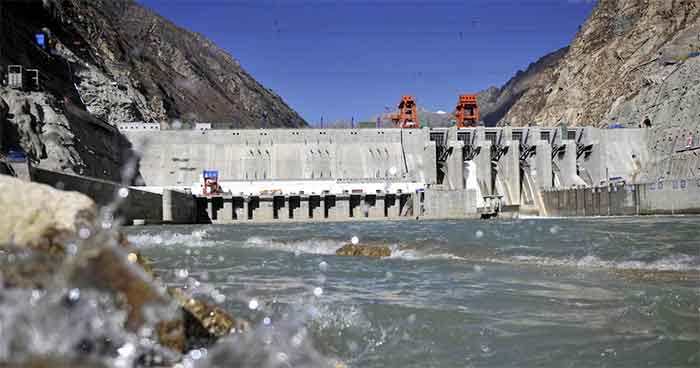
In the middle of several increasing problems, a good news that emerged recently is that tensions of India with several neighboring countries is reducing. In fact everything is to be gained by increasing cooperation among all countries of the region. However, while there are so many areas where increasing cooperation will give good results, there is one area which should be altogether left out of collaborative projects. This relates to various high hazard projects.
One obvious example of this are various dam projects , particularly those in or around the Himalayan region. China has embarked on several high risk dam projects on the Brahmaputra river in the Tibet region, and India has some plans for dam projects on its side . If increase in cooperation results in speeding up of such high risk projects this will be very harmful. Instead both countries should listen to the advice of several independent experts who warn against taking up these projects, or at least for much better and careful, detailed assessment of safety aspects before going ahead. Cooperation should also involve much more concern for the interests of all countries and for the safety and well-being of the entire region.
Similarly Nepal and India should be careful not to interpret more cooperation in terms of speeding up high risk projects.
At a time when the task of preparing a project report for the Barahshretra high dam project on Kosi river as an India-Nepal joint initiative has been revived, it is necessary to go back several decades and recall why this project was considered and abandoned then.
On September 22, 1954 Anugraha Narayan Singh, the then Finance Minister of Bihar informed the Vidhan Sabha, “For about 2 to 3 years it has been investigated whether a 700 feet high dam will be constructed on Kosi river and a lot of money has been spent on this. …But later when it was considered that if the 700 feet dam collapses then the entire Bihar and Bengal will be submerged and ruined, this idea was given up.”
Around the same time N.V. Gadgil told the Lok Sabha that when tests were conducted the entire area was revealed to be affected by seismicity. Then, he said, alternatives to this project has to be considered keeping in view the possibility of collapse of dam.
In 1934 a highly destructive 8.3 intensity earthquake had devastated parts of Bihar and Nepal and the possibility of another such quake had led the authorities and their experts to abandon this project.
Now that the Barahshretra Kosi project has been revived, it will be useful to recall the entire debate of those times particularly regarding the safety aspects. Dinesh Mishra, engineer, social activist and author, has written a detailed history of various Kosi river projects has stated that he is extremely apprehensive about how the folly of existing flood-projects can be worsened further by unsafe, ill-advised projects like the Barahshretra high dam. At present the worst affected are those people, numbering about a million, who are caught between the embankments and the Kosi river. Instead of helping them, the authorities inflicted more misery on them in the course of implementing the Kosi Mahasetu project. If in future these people have to live with the threat of sudden massive discharge of dam water, as has been the case of many high dam projects, their tragedy can be imagined. The silt content of Kosi water is extremely high, and danger of very rapid silting of reservoir will be very high here.
This is just one example of how cooperation of two countries to speed up a high risk project can prove counter-productive. When there is belated realization that high risk has been created, then instead of relations improving these can deteriorate. Instead cooperation at the level of people should lead to collection of important information which can contribute to better assessment of the actual benefits, adverse impacts and hazards of these projects. Cooperation should mean giving adequate democratic space to people for such better assessment and understanding to emerge.
Unfortunately what is common to the governments of India as well as its various neighboring countries is a very technocratic approach to important issues like rivers and dams , and if the voice of people and independent experts is better heard in all the countries, then a lot of upcoming serious risks and hazards in the entire region can be avoided, providing much relief and safety to people and environment now and in the next generations.
Bharat Dogra is a journalist and author. His recent books include Protecting Earth For Children and Planet in Peril.
GET COUNTERCURRENTS DAILY NEWSLETTER STRAIGHT TO YOUR INBOX
Related posts:
Related posts:
Views: 0
 RSS Feed
RSS Feed

















 March 14th, 2021
March 14th, 2021  Awake Goy
Awake Goy  Posted in
Posted in  Tags:
Tags: 
















